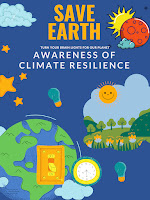Challenges Faced by Researchers in Crop Improvement
I. Complexity of Crop Traits
·
Quantitative traits: Most crop traits, such as yield, disease
resistance, and abiotic stress tolerance, are controlled by multiple genes and
are influenced by environmental factors. This makes it difficult to identify
the specific genes responsible for these traits and to develop effective
breeding strategies.
·
Gene-environment interactions: The expression of genes can be influenced by
environmental conditions, making it challenging to predict the performance of
new varieties in different regions and under varying climatic conditions.
II. Limited Genetic Diversity
·
Narrow genetic base: Many cultivated crops have a narrow genetic
base, limiting the genetic variation available for breeding. This can make it
difficult to develop new varieties with improved traits.
·
Loss of genetic resources: Genetic erosion due to habitat destruction,
climate change, and the adoption of high-yielding but genetically uniform
varieties is a major concern.
III. Slow Breeding Cycles
·
Long generation times: Many crops have long generation times, which
can slow down the breeding process and limit the number of generations that can
be evaluated in a given period.
·
Complex breeding pipelines: Breeding programs often involve multiple
steps, such as crossing, selection, and evaluation, which can be time-consuming
and resource-intensive.
IV. Resource Constraints
·
Limited funding: Research in crop improvement is often
underfunded, limiting the resources available for conducting experiments,
developing new technologies, and training personnel.
·
Infrastructure limitations: Lack of adequate infrastructure, such as
laboratories, greenhouses, and field research stations, can hamper research
activities.
V. Ethical and Social Concerns
·
GMO controversy: The development and use of genetically
modified organisms (GMOs) is often met with public resistance and ethical
concerns, which can hinder their adoption.
·
Intellectual property rights: The protection of intellectual property
rights can be a complex issue, particularly when it comes to sharing genetic
resources and commercializing new crop varieties.
Problems and Present Status of Crop Improvement in India
___________________________
Other factors
I. Biotic Stress
- Diseases:
- Viral
diseases (e.g., rice tungro, wheat rust)
- Bacterial
diseases (e.g., bacterial blight of rice, black rot of cotton)
- Fungal
diseases (e.g., powdery mildew, late blight of potato)
- Pests:
- Insect
pests (e.g., armyworm, bollworm)
- Nematodes
(e.g., root-knot nematode, cyst nematode)
- Rodents
(e.g., rats, mice)
- Weeds:
- Grassy
weeds (e.g., barnyard grass, crabgrass)
- Broadleaf
weeds (e.g., pigweed, purslane)
II. Abiotic Stress
- Drought:
- Water
scarcity in arid and semi-arid regions
- Low
rainfall and uneven distribution
- Salinity:
- Salt
accumulation in soils due to irrigation practices and poor drainage
- Temperature
Extremes:
- Heat
stress during summer
- Frost
and cold stress during winter
III. Soil Fertility and Nutrient Deficiencies
- Nutrient
deficiencies:
- Nitrogen,
phosphorus, potassium, and micronutrients (e.g., zinc, iron)
- Soil
degradation:
- Erosion,
compaction, and loss of organic matter
IV. Post-Harvest Losses
- Physical
losses:
- Damage
during harvesting, transportation, and storage
- Biological
losses:
- Spoilage
due to pests, diseases, and improper storage
- Chemical
losses:
- Contamination
with aflatoxins, mycotoxins, and other harmful substances
V. Socioeconomic Challenges
- Small
and marginal landholdings:
- Limited
access to resources and technology
- Lack
of infrastructure:
- Poor
irrigation facilities, roads, and markets
- Limited
access to credit and markets:
- Financial
constraints for farmers
- Lack
of awareness and adoption of improved technologies:
- Resistance
to new practices and varieties
VI. Policy and Institutional Challenges
- Outdated
agricultural policies:
- Need
for policies that promote sustainable agriculture and farmer empowerment
- Inefficient
public institutions:
- Lack
of coordination and accountability among government agencies
- Limited
investment in agricultural research and development:
- Insufficient
funding for research and extension activities.









